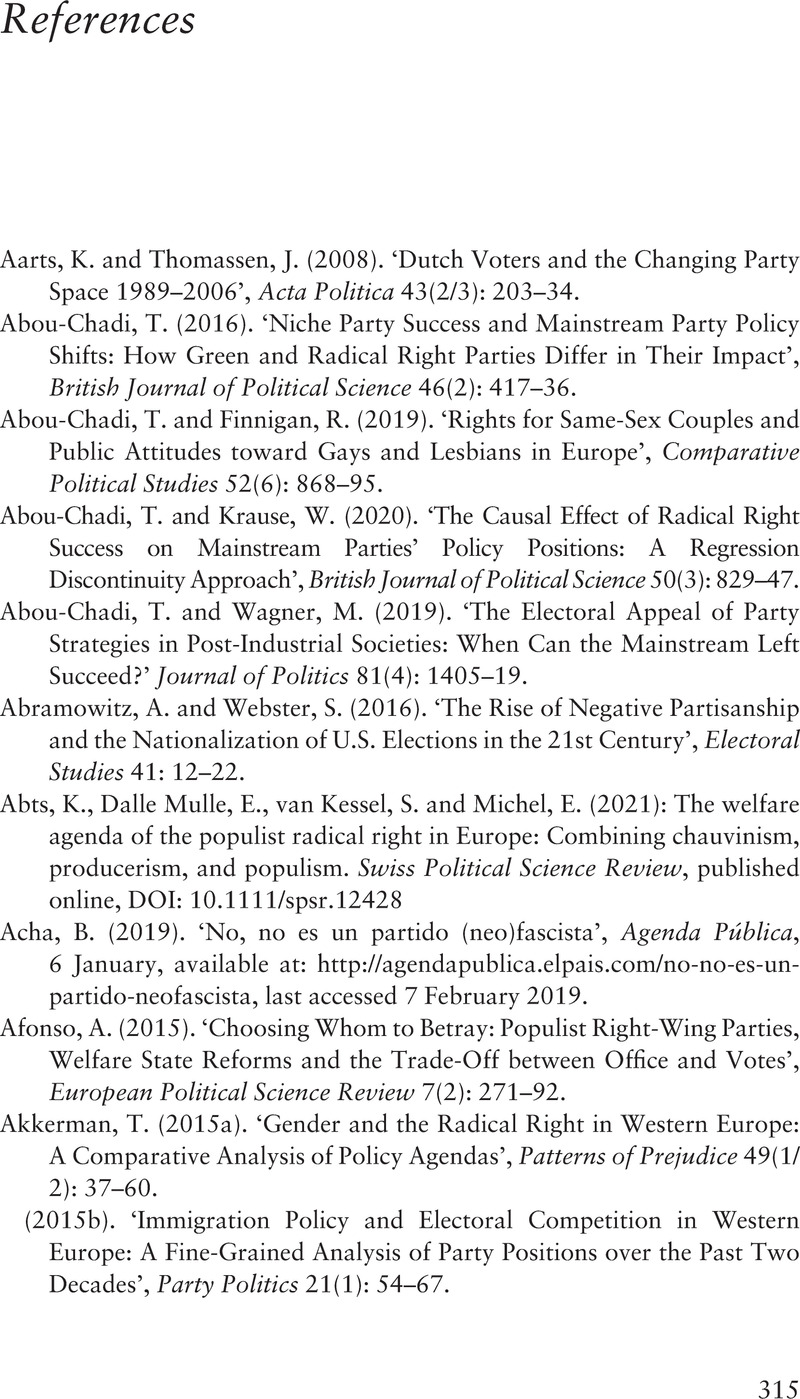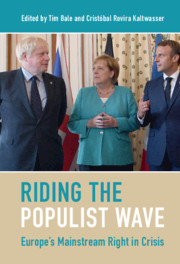Book contents
- Riding the Populist Wave
- Riding the Populist Wave
- Copyright page
- Contents
- Contributors
- Figures and Tables
- Preface
- 1 The Mainstream Right in Western Europe: Caught between the Silent Revolution and Silent Counter-Revolution
- 2 The Demand Side: Profiling the Electorate of the Mainstream Right in Western Europe since the 2000s
- 3 The Supply Side: Mainstream Right Party Policy Positions in a Changing Political Space in Western Europe
- 4 Austria: Tracing the Christian Democrats’ Adaptation to the Silent Counter-Revolution
- 5 France: Party System Change and the Demise of the Post-Gaullist Right
- 6 Germany: How the Christian Democrats Manage to Adapt to the Silent Counter-Revolution
- 7 Italy: The Mainstream Right and its Allies, 1994–2018
- 8 The Netherlands: How the Mainstream Right Normalized the Silent Counter-Revolution
- 9 Spain: The Development and Decline of the Popular Party
- 10 Sweden: The Difficult Adaptation of the Moderates to the Silent Counter-Revolution
- 11 The United Kingdom: The Conservatives and their Competitors in the post-Thatcher Era
- 12 The Mainstream Right in Western Europe in the Twenty-First Century
- References
- Index
- References
References
Published online by Cambridge University Press: 13 August 2021
- Riding the Populist Wave
- Riding the Populist Wave
- Copyright page
- Contents
- Contributors
- Figures and Tables
- Preface
- 1 The Mainstream Right in Western Europe: Caught between the Silent Revolution and Silent Counter-Revolution
- 2 The Demand Side: Profiling the Electorate of the Mainstream Right in Western Europe since the 2000s
- 3 The Supply Side: Mainstream Right Party Policy Positions in a Changing Political Space in Western Europe
- 4 Austria: Tracing the Christian Democrats’ Adaptation to the Silent Counter-Revolution
- 5 France: Party System Change and the Demise of the Post-Gaullist Right
- 6 Germany: How the Christian Democrats Manage to Adapt to the Silent Counter-Revolution
- 7 Italy: The Mainstream Right and its Allies, 1994–2018
- 8 The Netherlands: How the Mainstream Right Normalized the Silent Counter-Revolution
- 9 Spain: The Development and Decline of the Popular Party
- 10 Sweden: The Difficult Adaptation of the Moderates to the Silent Counter-Revolution
- 11 The United Kingdom: The Conservatives and their Competitors in the post-Thatcher Era
- 12 The Mainstream Right in Western Europe in the Twenty-First Century
- References
- Index
- References
Summary

- Type
- Chapter
- Information
- Riding the Populist WaveEurope's Mainstream Right in Crisis, pp. 315 - 344Publisher: Cambridge University PressPrint publication year: 2021



